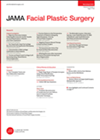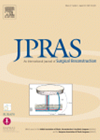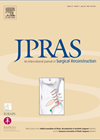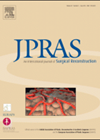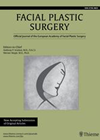
Journal Reviews
Non-surgical periocular aesthetics
The periocular region is the focal point of facial communication. Millimetre increments of change required to achieve bilateral symmetry and harmony can be difficult to achieve by surgical means only. Non-surgical aesthetic modifications offer a number of advantages in selected...
Post auricular advancement flap for partial helix defect repair
Ear defects can be the result of trauma, burns or ablative surgery. The three dimensional structure of the pinna with its subunits presents a difficult reconstructive challenge as successful reconstruction requires both similar tissue cover and a supporting framework. Partial...
Successful nose replantation
This case report describes a superb result following the delayed replantation (after eight hours) of the distal right nostril following a dog bite. The patient was a heavy smoker. Two arteries and two veins were anastomosed, one measuring 0.6mm and...
A retrospective comparison between standard septoplasty and extracorporeal septoplasty
This paper shows the results of a retrospective study made on 169 patients with nasal obstruction due to a deviated nasal septum who were operated using a standard septoplasty technique or performing an extracorporeal septoplasty. Postoperative nasal patency, aesthetic outcome,...
Labbé in children
This is the first report in the literature of orthodromic temporalis tendon transfer or the Labbé technique performed on children. The authors used a modification of the transoral approach to the temporalis tendon, originally described by Byrne and Boahene, which...
Superiorly based nasolabial flaps
This interesting paper takes the common or garden nasolabial flap to new extremes. The flap is based on the contralateral superior orbital artery and behaves as an axial patterned flap as far as the alar rim, becoming a random patterned...
One stage nasal reconstruction with local flaps
This is an excellent and authoritative review of an often difficult and controversial clinical subject. Because of increased education and earlier diagnosis of skin tumours, surgeons are being presented with an increasing number of defects with limited size and depth....
Free style facial artery perforator flaps for nasal reconstruction
This is an update from the team of authors that originally described the free style facial artery perforator flap, for one stage nasal reconstruction, in 2009. They now update after 10 years of experience with these freestyle facial artery perforator...
Three-dimensional imaging of the supratip after lower lateral cartilage repositioning
Cephalically positioned lower lateral cartilages (LLCs) contribute to the bulbous-appearing nasal tip. Repositioning of the LLCs removes volume created in the nasal sidewall / supratip regions leading to better tip refinement. This reshaping of the tip is ameliorated by application...
Non invasive simple reshaping of pinnae
The authors of this paper show the results of a prospective controlled in vivo animal model study where the pinnae of 18 New Zealand white rabbits were subjected to electromechanical reshaping (EMR) and three months postoperative splinting. Six voltage and...
Nasal osteotomies
The authors performed a prospective cadaveric study (N=20). They evaluated different fracture patterns in order to define the necessity for performing paramedian or transversal osteotomies. To do so, the cadavers were divided into two groups. Ten had a paramedian osteotomy...
Loosen up
Lower eyelid retraction is a complex eyelid malposition with varied causes and anatomic features that make correction of eyelid position challenging. This original study presents a new surgical concept for correction of lower eyelid retraction in a particular patient population:...

